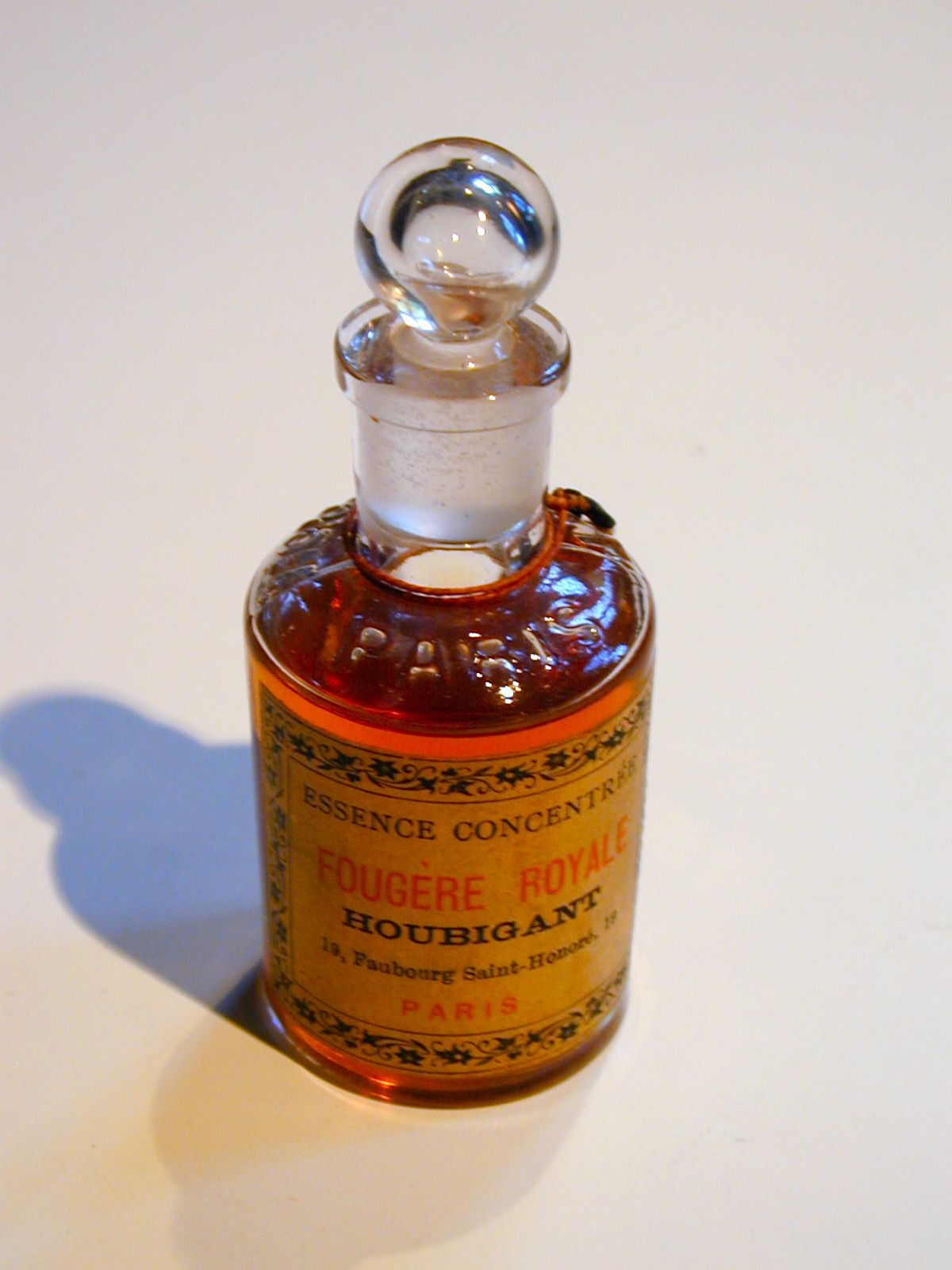Paul Parquet on:
[Wikipedia]
[Google]
[Amazon]
 Paul Parquet (1856–1916) was a French
Paul Parquet (1856–1916) was a French
 With his use of
With his use of
 Paul Parquet (1856–1916) was a French
Paul Parquet (1856–1916) was a French perfumer
A perfumer is an expert on creating perfume compositions, sometimes referred to affectionately as a ''nose'' (French: ''nez'') due to their fine sense of smell and skill in producing olfactory compositions. The perfumer is effectively an artist wh ...
and joint owner of Houbigant. Called the "greatest perfumer of his time" by Ernest Beaux
Ernest Beaux ( – 9 June 1961) was a Russian-born French perfumer who is best known for creating Chanel No. 5, which is perhaps the world's most famous perfume.
Family background
Born in Moscow, Ernest Beaux was the son of Edouard Hyppolite ...
, he is widely regarded as the founder of modern perfumery for having pioneered the use of synthetics in works such as ''Fougère Royale''. His bestselling perfume, ''Le Parfum Idéal'', was described by Robert Bienaimé as a “masterpiece of fragrant equilibrium, harmonious and of good taste as shall never be surpassed”.
Career
Paul Parquet joined theperfume
Perfume (, ; french: parfum) is a mixture of fragrant essential oils or aroma compounds (fragrances), fixatives and solvents, usually in liquid form, used to give the human body, animals, food, objects, and living-spaces an agreeable scent ...
house of Houbigant as a part owner in 1880, and was the nose behind their most famous early creations, such as:
* ''Le Chypre Idéal'' (date unknown)
* ''Le Royal Houbigant'' (date unknown)
* ''Fougère Royale'' (1884)*
* ''Peau d'Espagne'' (1894)*
* ''Parfum d'Argeville'' (1895)*
* ''Cœur de Jeannette'' (1900)*
* ''Jockey Club'' (1900)*
* ''Le Parfum Idéal'' (1900)*
* ''Royal Cyclamen'' (1900)*
* ''Mes Délices'' (1904)
* ''Royal Bouvardia'' (1904)
* ''L’Œillet du Roy'' (1906)*
* ''Violette Pourpre'' (1907)
* ''La Rose France'' (1911)*
''(*) indicates inclusion in the archives of the Osmothèque''
Parquet was the chief perfumer of the house, succeeded by Robert Bienaimé, the creator of ''Quelques Fleurs'' ( Houbigant, 1912).
Parquet was appointed Chevalier de la Légion d'Honneur
The National Order of the Legion of Honour (french: Ordre national de la Légion d'honneur), formerly the Royal Order of the Legion of Honour ('), is the highest French order of merit, both military and civil. Established in 1802 by Napoleon ...
in 1908. He bequeathed his fortune to the establishment of a pediatric
Pediatrics ( also spelled ''paediatrics'' or ''pædiatrics'') is the branch of medicine that involves the medical care of infants, children, adolescents, and young adults. In the United Kingdom, paediatrics covers many of their youth until the ...
center, the Fondation Paul Parquet in Neuilly-sur-Seine
Neuilly-sur-Seine (; literally 'Neuilly on Seine'), also known simply as Neuilly, is a commune in the department of Hauts-de-Seine in France, just west of Paris. Immediately adjacent to the city, the area is composed of mostly select residentia ...
.
Importance
 With his use of
With his use of coumarin
Coumarin () or 2''H''-chromen-2-one is an aromatic organic chemical compound with formula . Its molecule can be described as a benzene molecule with two adjacent hydrogen atoms replaced by a lactone-like chain , forming a second six-membered h ...
in ''Fougère Royal'', juxtaposed to lavender
''Lavandula'' (common name lavender) is a genus of 47 known species of flowering plants in the mint family, Lamiaceae. It is native to the Old World and is found in Cape Verde and the Canary Islands, and from Europe across to northern and easte ...
, citrus
''Citrus'' is a genus of flowering trees and shrubs in the rue family, Rutaceae. Plants in the genus produce citrus fruits, including important crops such as oranges, lemons, grapefruits, pomelos, and limes. The genus ''Citrus'' is native to ...
and wood
Wood is a porous and fibrous structural tissue found in the stems and roots of trees and other woody plants. It is an organic materiala natural composite of cellulose fibers that are strong in tension and embedded in a matrix of lignin ...
y notes, he revolutionized perfumery in being the first perfumer to ever use a synthetic fragrance material in his creations, and in conceptualizing a scent that was not an imitation of a natural smell, as ferns (''fougère'' is French for fern) are basically odorless. Until its disappearance from the market in the late 1960s, ''Fougère Royale'' was often imitated and became the most typical representative of a whole family of related fragrance, the so-called fougère
''Fougère'', , is one of the main olfactive families of perfumes. The name comes from the French language word for "fern". ''Fougère'' perfumes are made with a blend of fragrances: top-notes are sweet, with the scent of lavender flowers; ...
perfumes.
Famous quote
"If God gave ferns a scent, they would smell like ''Fougère Royal''", Paul Parquet.Patricia de Nicolaï
Patricia de Nicolaï is a French perfumer who works as the head of her own perfume company Parfums de Nicolai. She is also a member of the technical committee of the French Society of Perfumers and the president of the Osmothèque scent archive.
...
, "A Smelling Trip into the Past: The Influence of Synthetic Materials on the History of Perfumery". In ''Current Topics in Flavor and Fragrance Research'', Philip Kraft and Karl A. D. Swift (Eds), Verlag Helvetica Chimica Acta, Zürich, and WILEY-VCH Verlag, Weinheim, 2008, , p. 305–314.
References
{{DEFAULTSORT:Parquet, Paul French perfumers 1856 births 1916 deaths 19th-century French businesspeople